Discover 12 Gorgeous Epiphyllum Cacti Species
Imagine having a plant that brings both beauty and joy into your life. That’s exactly what Epiphyllums do! These amazing plants are a delight to care for, especially when they burst into bloom, revealing their stunning and uniquely-shaped flowers. Taking care of an Epiphyllum is not as tough as you might think, but there are a few important things to remember. In this ultimate guide to Epiphyllum care, we’ll explore everything you need to know to keep your Epiphyllum thriving and blooming in all its glory. Get ready to embark on an enchanting journey into the world of Epiphyllums!
Contents
- 1 What Does Epiphyllum Mean?
- 2 Is Epiphyllum a Succulent?
- 3 Types of Epiphyllum Cacti
- 3.1 Epiphyllum anguliger
- 3.2 Epiphyllum crenatum
- 3.3 Epiphyllum cv. Fruhlingsgold
- 3.4 Epiphyllum floribundum
- 3.5 Epiphyllum hookeri hookeri
- 3.6 Epiphyllum hookeri
- 3.7 Epiphyllum laui
- 3.8 Epiphyllum lepidocarpum
- 3.9 Epiphyllum oxypetalum
- 3.10 Epiphyllum phyllanthus
- 3.11 Epiphyllum pumilum
- 3.12 Epiphyllum thomasianum
- 4 How Do You Care for Epiphyllum?
- 5 How Do You Propagate Epiphyllum?
- 6 Does Epiphyllum Like Humidity?
- 7 Does Epiphyllum Like the Sun?
- 8 How Long Does It Take for Epiphyllum to Bloom?
What Does Epiphyllum Mean?
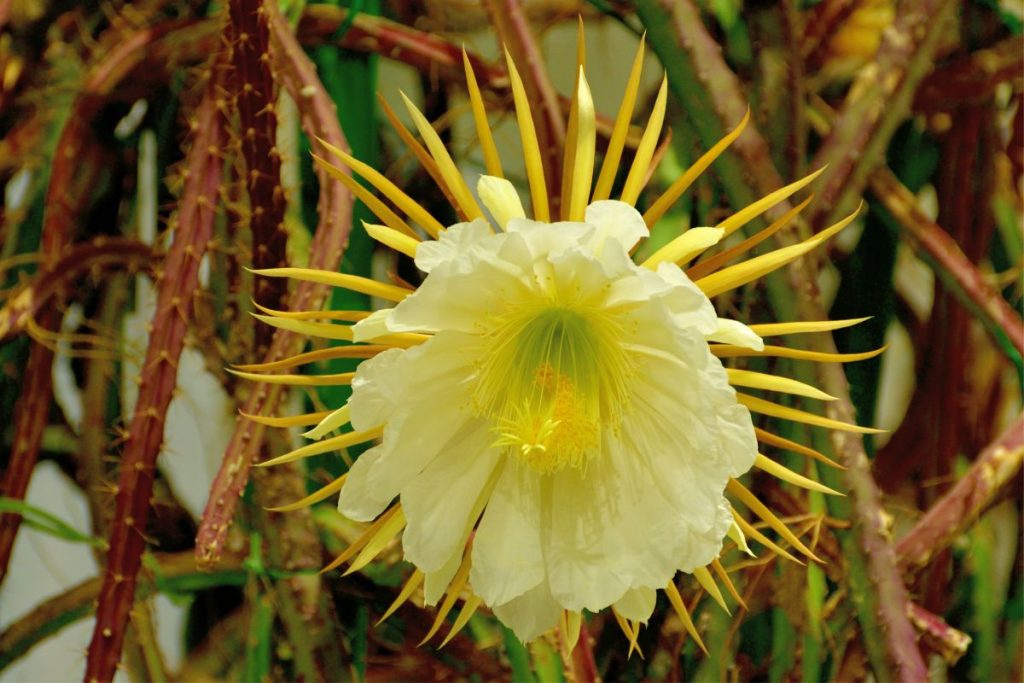
You might be wondering what exactly the word “Epiphyllum” means. Well, it’s pretty straightforward! Epiphyllum is a type of cactus that has a unique way of growing. It likes to hitch a ride on other plants to get the support it needs, but it’s not a plant parasite. Isn’t that interesting?
These special cacti are often found growing naturally in Central America, but people from all over the world have also started growing them. Sometimes, they are even called orchid cacti because of their extraordinary flowers that bloom from their leaves. Talk about being exotic!
Is Epiphyllum a Succulent?
You know what’s cool? An Epiphyllum is not just a cactus, but it’s also a succulent! What does that mean, you ask? Well, succulents are plants that have a special way of storing water in their leaves, stems, and roots. And since Epiphyllums are cacti, they have a fantastic water storage system that allows them to survive for a long time without watering.
But here’s the thing: not all succulents are cacti, even though all cacti are succulents. Confusing, right? The main difference is that cacti can handle hot temperatures and even bloom in bright sunlight. Meanwhile, any plant that stores water in its leaves, stems, and roots is considered a succulent. So, Epiphyllums are both cacti and succulents. Double the awesomeness!
Types of Epiphyllum Cacti
There is a wide range of stunning Epiphyllum varieties to explore, each with its own unique characteristics and beauty.
Epiphyllum anguliger
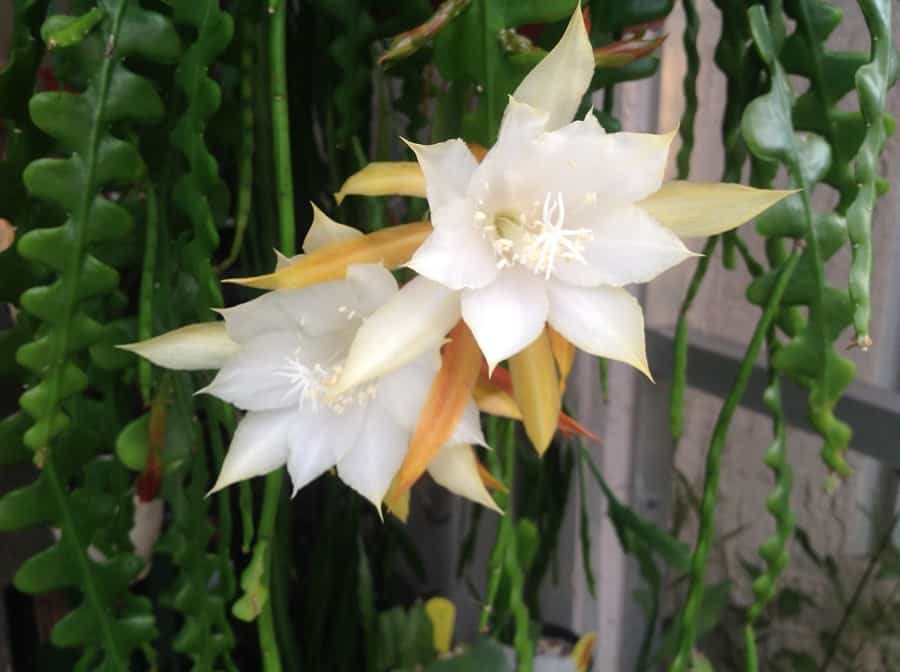
This unique cactus has eye-catching, zigzag-shaped stems, almost like a snake! It’s truly a sight to behold.
Epiphyllum crenatum
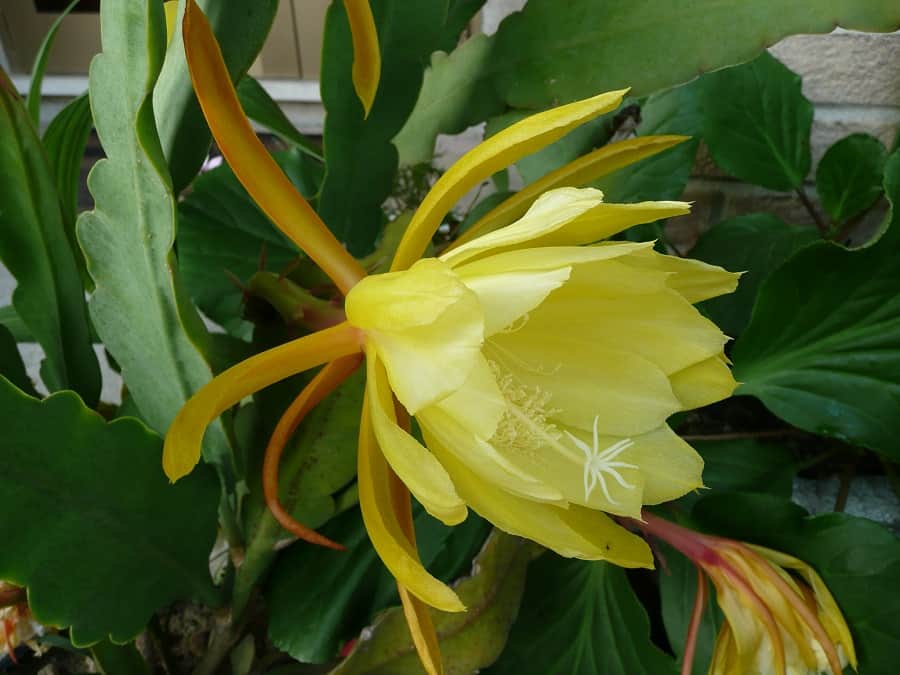
Also known as the Crenate Orchid cactus, this popular species has robust stems that look like leaves and edges with notches or scallops. The beautiful white flowers that bloom at night make it even more special.
Epiphyllum cv. Fruhlingsgold
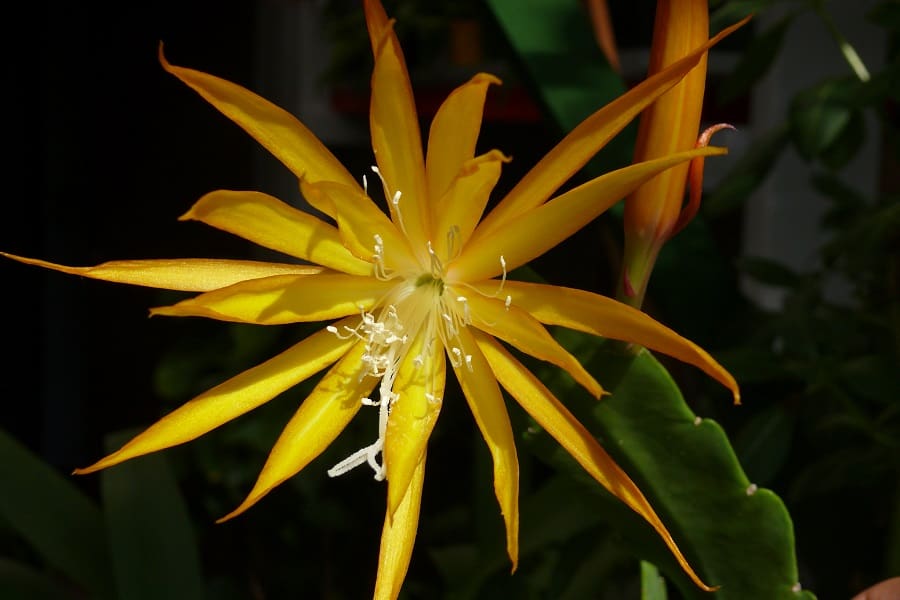
This small to medium-sized hybrid cactus boasts funnel-shaped flowers. The narrow yellow petals, along with a refreshing lemon scent, make it a delightful bloom. Plus, if you leave multiple buds on one stem, you’ll have a stunning display of smaller, colorful flowers.
Epiphyllum floribundum
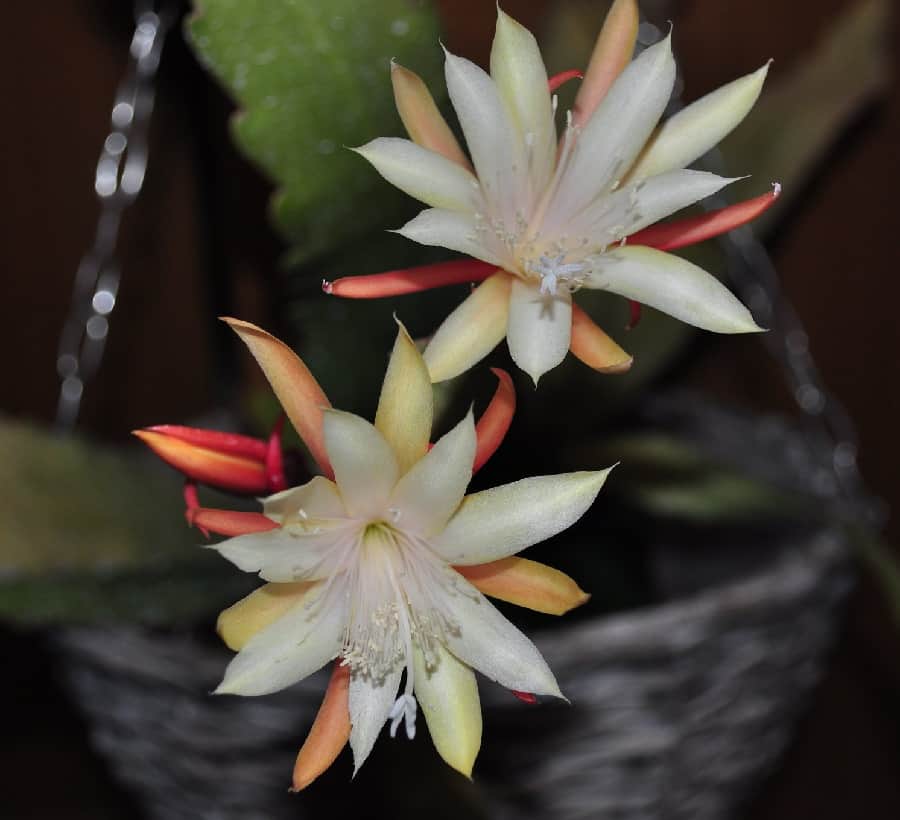
With its profusion of blossoms, this Epiphyllum species is a true showstopper. The vibrant flowers will captivate you with their beauty.
Epiphyllum hookeri hookeri
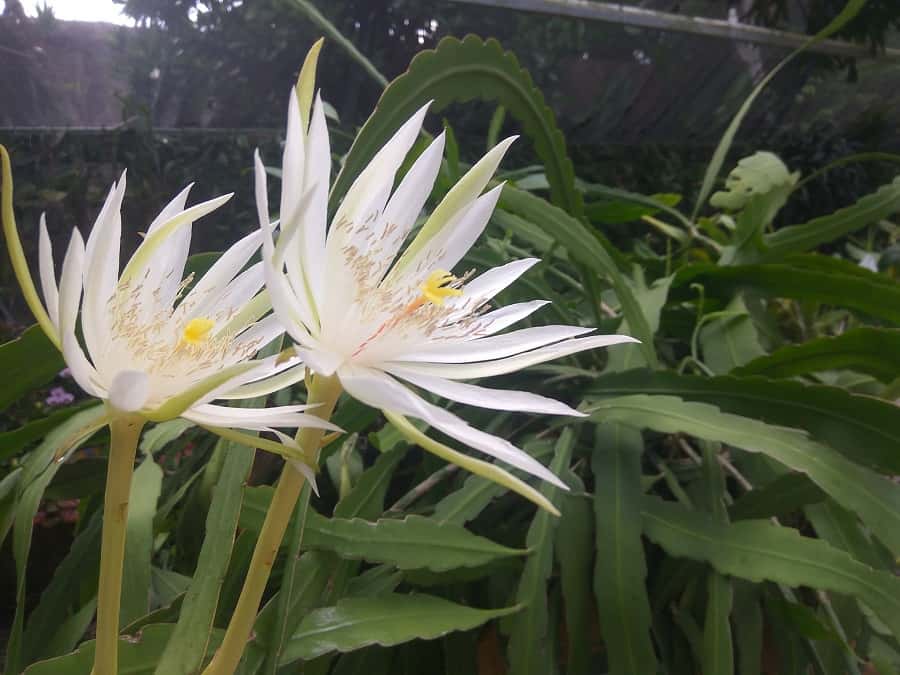
Sporting attractive stems, this Epiphyllum variety is a treat for the eyes. Its elegant flowers add a touch of class to any collection.
Epiphyllum hookeri
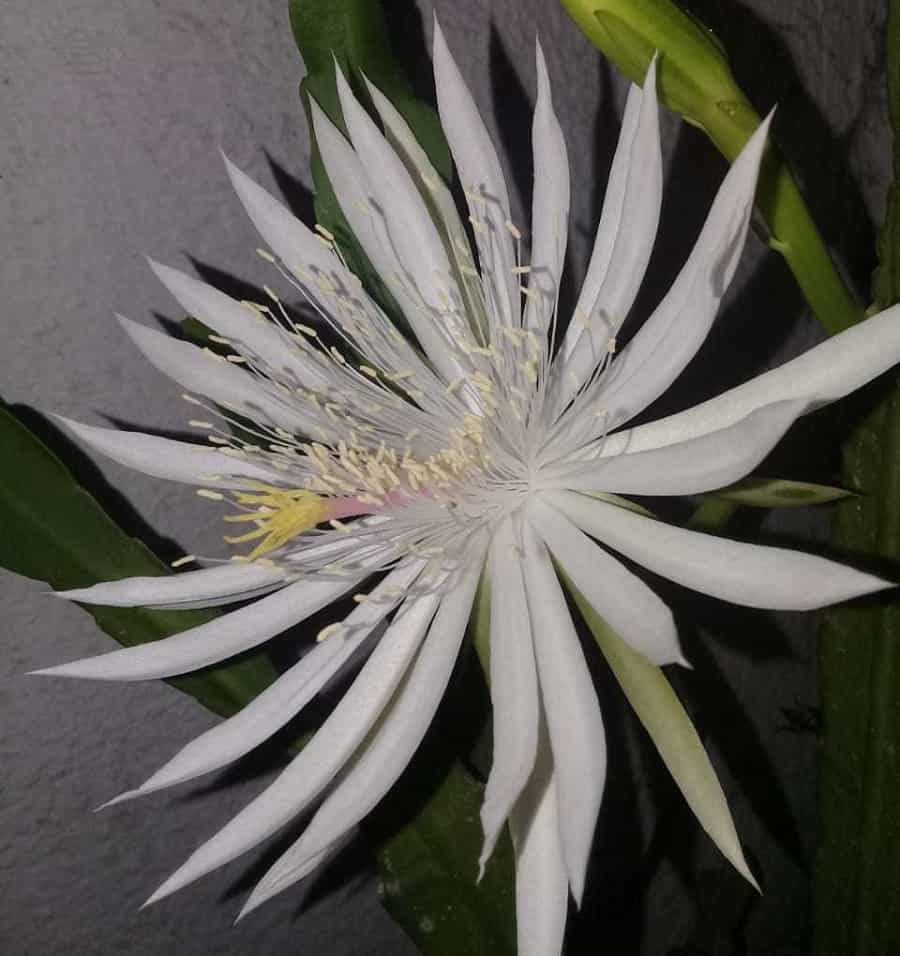
Get ready to meet Epiphyllum hookeri, a remarkable cactus with fascinating features. Its captivating stems and stunning flowers make it a must-have for any cactus enthusiast. This variety will add a touch of elegance to your collection, leaving you in awe of its beauty.
Epiphyllum laui
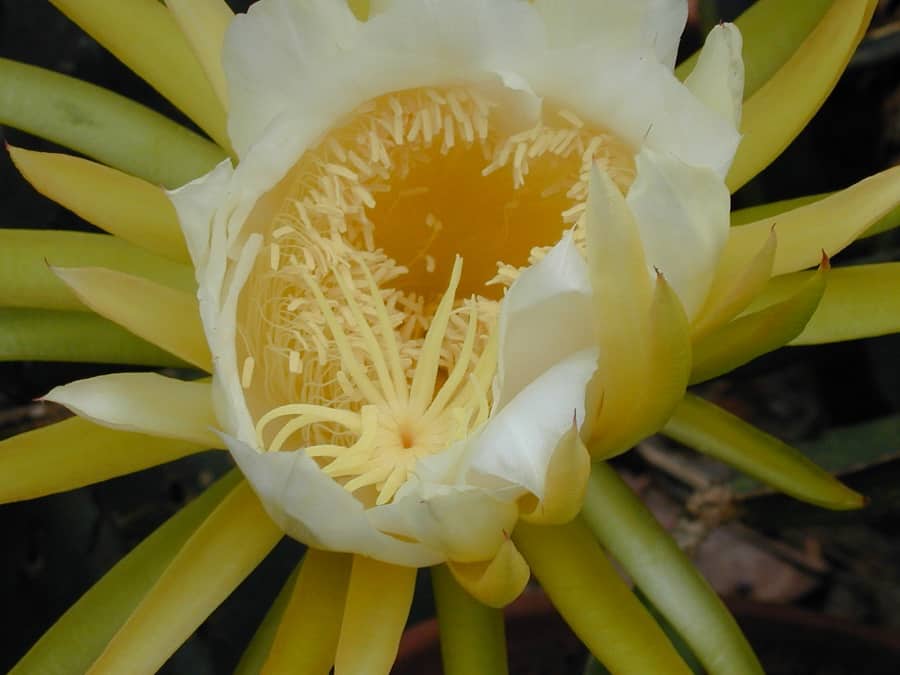
Get ready for a lovely combination of white and yellow tones with Epiphyllum laui. Its striking appearance is sure to make a statement.
Epiphyllum lepidocarpum
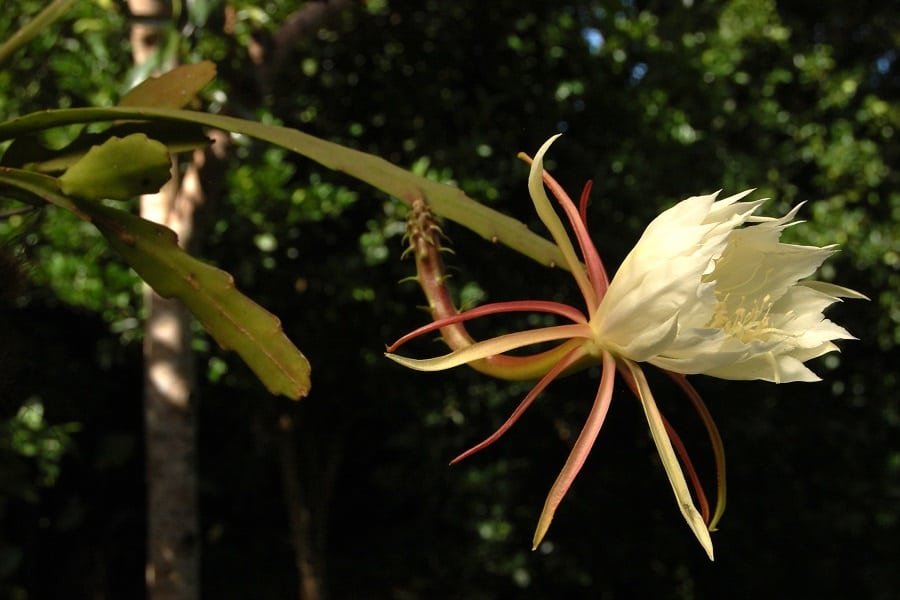
A unique feature of this cactus is its spiny appearance. The Epiphyllum lepidocarpum stands out with its textured stems that add a touch of intrigue to any garden
Epiphyllum oxypetalum
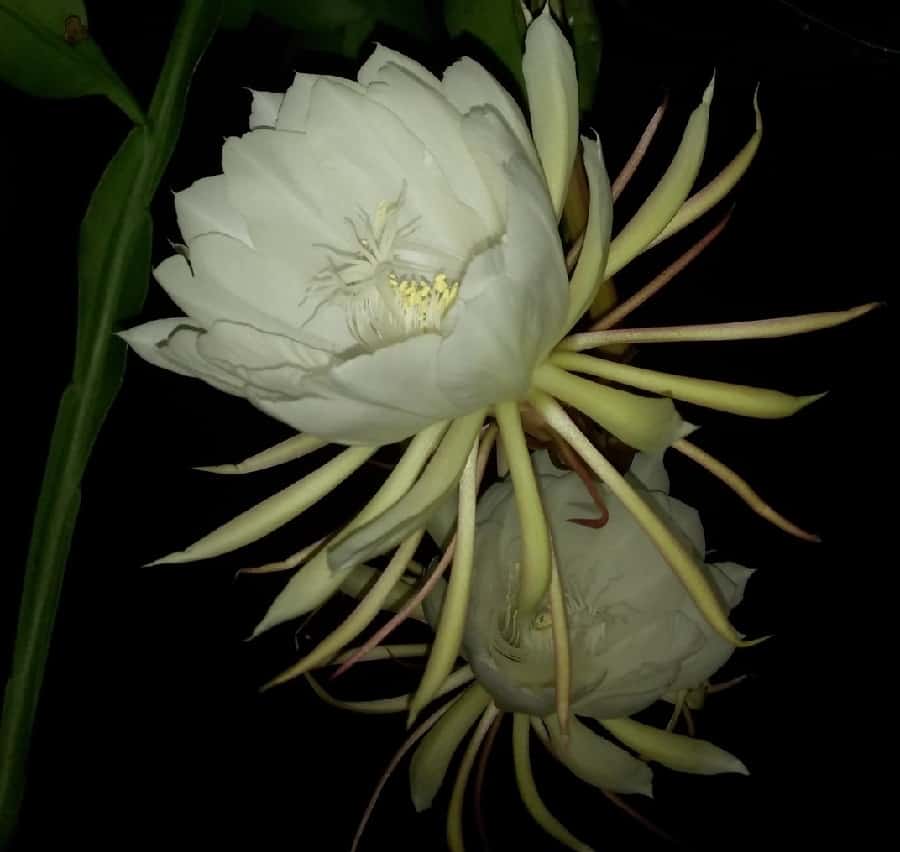
Known as the Queen of the Night, this species is a true favorite. With its large white flowers that open at night, it adds a touch of enchantment to your surroundings.
Epiphyllum phyllanthus
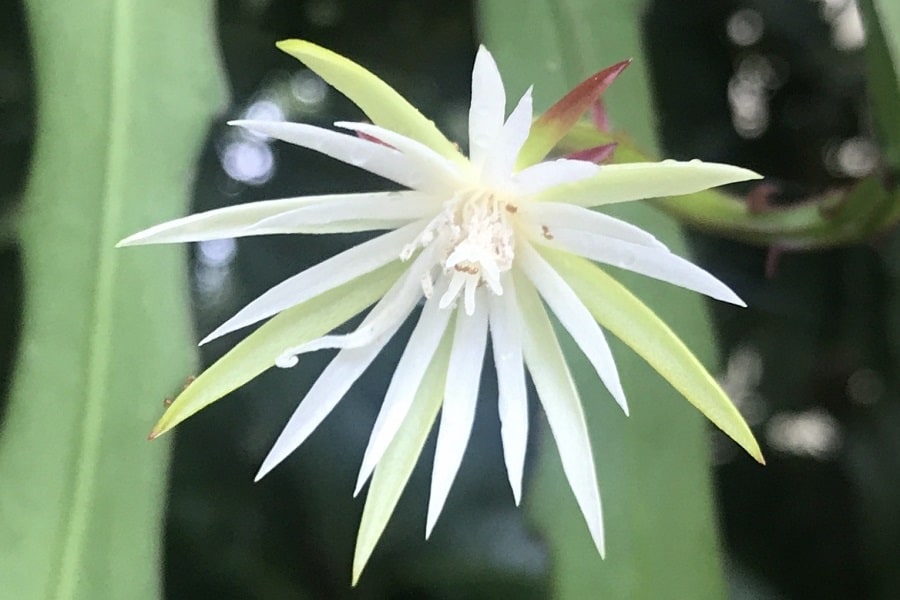
This branching cactus has slender, scented flowers that can reach an impressive length of up to 12 inches. Its delicate beauty is truly captivating.
Epiphyllum pumilum
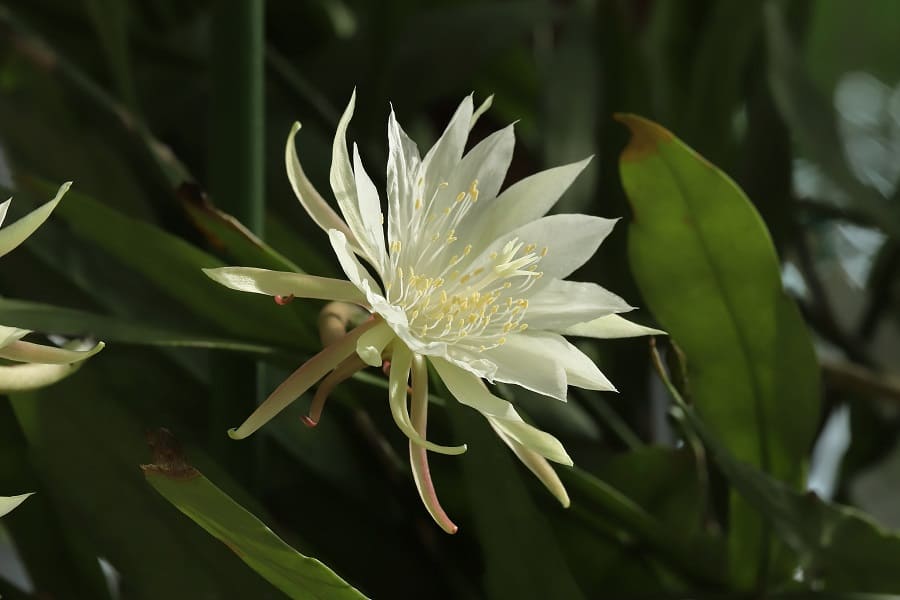
Don’t be fooled by its name; this cactus may be small, but it’s big on charm. The Epiphyllum pumilum is a delightful addition to any cactus collection.
Epiphyllum pumilum vs oxypetalum
While both species share some similarities, they also have distinct characteristics that set them apart. Let’s take a closer look at these fascinating cacti, comparing them in terms of size, flower dimensions, and blooming patterns.
- Size: Epiphyllum pumilum tends to be smaller compared to Epiphyllum oxypetalum. Epiphyllum pumilum typically reaches a height of about 6 to 12 inches and spreads horizontally, forming compact clusters of stems. On the other hand, Epiphyllum oxypetalum can grow much larger, with heights ranging from 3 to 6 feet. Its branching pattern creates a more expansive and impressive display.
- Flower Dimensions: Epiphyllum pumilum flowers are generally smaller, measuring around 3 to 4 inches in diameter. They display beautiful shades of pink, red, or white and have a delicate, intricate appearance. In contrast, Epiphyllum oxypetalum boasts larger flowers, with diameters ranging from 8 to 12 inches. These magnificent flowers feature cascading petals that create an enchanting visual spectacle.
- Blooming Patterns: Epiphyllum pumilum tends to bloom in clusters, with multiple flowers opening at once. This creates a picturesque display of colorful blooms, offering a burst of vibrancy. On the other hand, Epiphyllum oxypetalum blooms in a more sequential manner. Its large, fragrant flowers open individually, usually during the night, and last for a shorter period. Each mesmerizing bloom captivates viewers with its graceful beauty.
Epiphyllum thomasianum
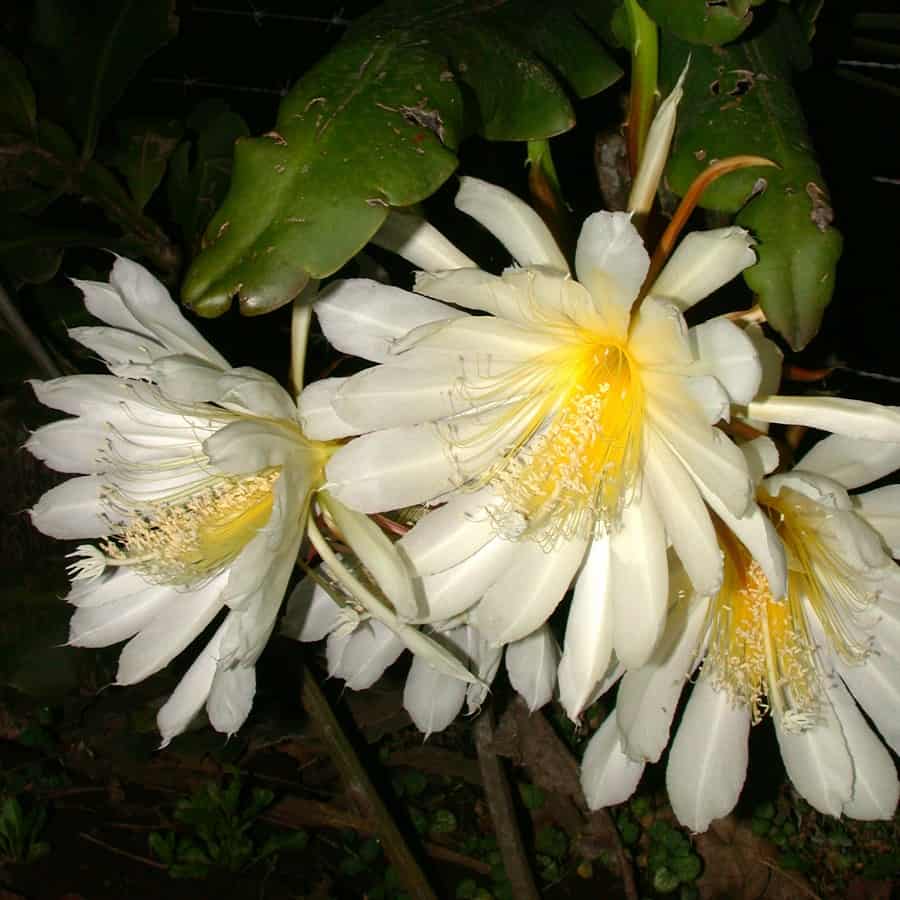
Last but certainly not least, we have the Epiphyllum thomasianum. This distinct cactus has its own unique attributes that make it a standout among the Epiphyllum family.
How Do You Care for Epiphyllum?
Taking care of Epiphyllum cacti is all about finding the right balance of water, light, and nutrients. These plants don’t need to be watered more than once a week, especially in temperate or humid climates.
If you keep your Epiphyllum indoors, make sure to place it near a window where it can get plenty of bright, indirect sunlight. This light is crucial for the plant to carry out photosynthesis and produce its own food.
Since Epiphyllum doesn’t require much water, it’s important to be cautious when using strong commercial fertilizers. Diluting these fertilizers can be challenging and may cause fertilizer burn. So, it’s best to use a milder fertilizer or organic options.
In addition to the right amount of water and light, maintaining a suitable environment for your Epiphyllum is essential. Provide it with ample natural light, fresh air, and ensure the soil has proper drainage. Epiphyllum, like other succulents, is relatively low-maintenance as long as you get the basics right.
Proper Epiphyllum species identification plays a vital role in providing tailored care, as different varieties may have specific requirements.
How Do You Propagate Epiphyllum?
Propagating Epiphyllum is an exciting process that involves taking cuttings from a healthy stem or leaf. You can take multiple cuttings if you have a parent plant you’d like to propagate.
After taking the cuttings, plant them in a shallow pot with a drainage hole. Regular soil won’t work well for Epiphyllum, so it’s important to use a special cactus soil mix that provides good drainage. Water the soil enough to make it damp but not soggy.
Now, allow the cuttings to take root and grow. Be careful not to overwater them. Like other cacti and succulents, Epiphyllum only needs to be watered once a week. Make sure the plant receives the right amount of light, avoiding intense afternoon heat that could harm the leaves.
Does Epiphyllum Like Humidity?
Epiphyllum cacti are often found in Central America, where they thrive in rainforest environments. This means they prefer a certain level of humidity.
If the weather is too dry, the Epiphyllum may struggle to thrive. It’s crucial to keep the soil slightly moist, allowing it to hold moisture while still draining effectively to prevent water accumulation at the bottom.
Does Epiphyllum Like the Sun?
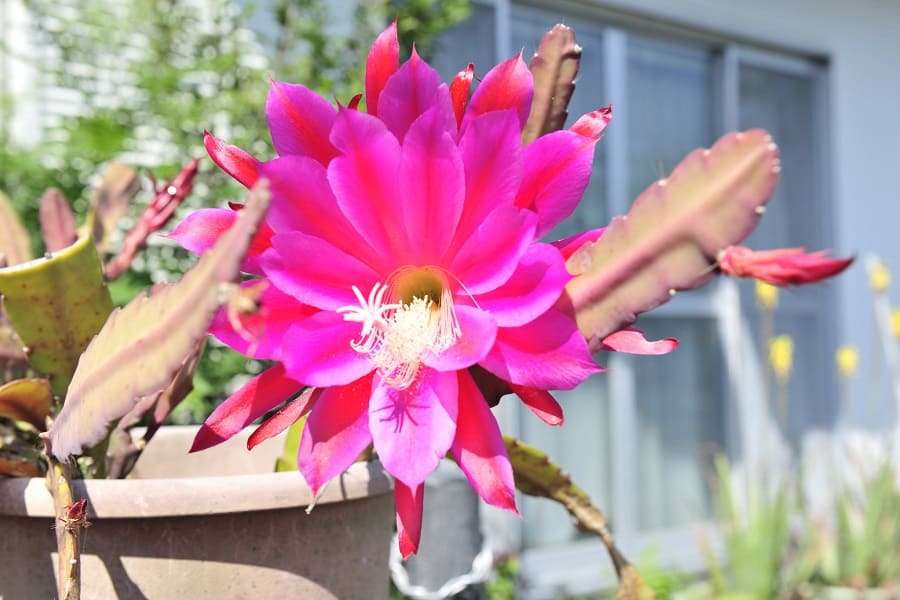
In general, cacti prefer the morning sun rather than the intense heat of the afternoon. Epiphyllum cacti require plenty of natural light but benefit from filtered sunlight to prevent damage to the leaves and excessive dehydration. To care for an Epiphyllum, find a spot that receives some shade during the day but still gets plenty of sun in the morning.
How Long Does It Take for Epiphyllum to Bloom?
If you’ve propagated an Epiphyllum from a cutting, it can take up to three years for it to finally bloom flowers. The cutting needs time to develop branches and grow into a mature plant.
Once the Epiphyllum starts to flower, you can expect annual blooms in the spring, with the flowers often lasting until early summer. Some varieties of Epiphyllum may bloom for just one night, withering away by noon the next day. If the plant is already rooted, it may bloom in less than three years. Patience pays off when waiting for these stunning blooms!
